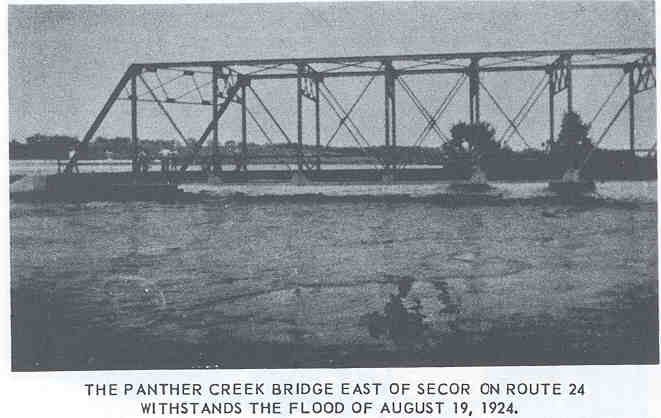drifts blocking all rail and highway transportation
for two or three days. One of the latest big snow storms occurred Easter
Sunday morning, falling during the night of April 3-4, 1920. It was deep
enough to stop a passenger train east of El Paso where a cut drifted shut;
the passengers came to town in sleds, including Tex Rickard, famous fight
promoter. Neither of these great snows remained long on the ground, but
they provided fuel problems for those with a short coal supply. January
and February of 1936 proved the most critical for continued cold weather
and low fuel supplies. At times there was less than twenty-five tons of
coal in all the El Paso yards, the fuel being rationed in half-ton lots.
It remained extremely cold for six weeks, and the frost went as much as
forty inches deep, with frozen water pipes a daily handicap.
Near cloud bursts or prolonged rains have often flooded basements, washed
out bridges and disrupted train and road transportation. Such a flood followed
the May, 1858 cyclone by two weeks; another occurred in 1902 and again
in 1915. The new hard road between Secor and El Paso had been opened only
a short time when the eight-inch rain came the night of August 18-19, 1924,
washing out the new fill west of the Panther Creek bridge. Peter Donner
had lived in the Panther Creek

The Panther Creek Bridge east of Secor on Route 24 withstands the
flood of August 19, 1924.
water shed all his life and he had warned the hard road engineers that
the bridge opening there was too small, and his prediction quickly proved
to be correct. This was corrected three years ago. The summers of 1927,
1943 and 1951 saw torrential rains wash away our valued top soil, the one
of July 8, 1951 raising the water level at the Andrew Haas bridge over
Panther Creek to a new all-time record.
IMPORTANT TRIALS. It is not possible to build a community and
Page 148
Go to previous page
Go to next page
Go to El Paso Story gateway page

